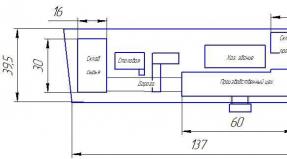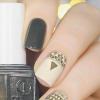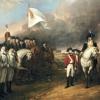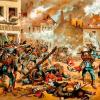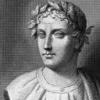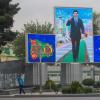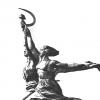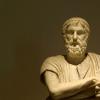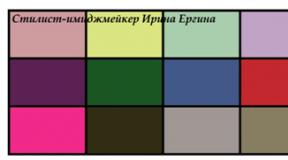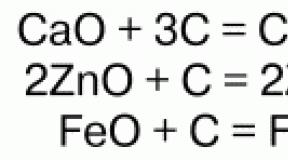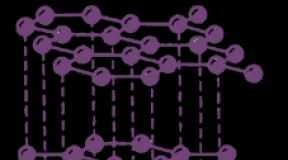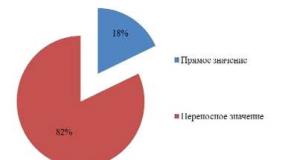Columns and roof in Masonic symbols. Masonic symbol in memorial architecture. Route through places associated with Freemasonry
One could easily write a fascinating novel in the spirit of Dan Brown about Moscow. If you carefully look at ancient buildings, it turns out that a lot of their design can be interpreted as signs of secret societies, such as Masons.
Freemasonry has always been closely associated with architecture. It is no coincidence that the members of the lodge called God the Great Architect or the Architect of the universe, and among the main symbols were the compass, the trowel and the plumb line. In itself, the process of building a building could refer to the creation of a new, more perfect society. In many ways, therefore, the secret society revealed its philosophy to the world mainly through architecture.
Of course, the attribution of one or another architectural element to Masonic symbolism immediately raises questions - one can see paranoia or confidence in the existence of a world behind the scenes in this. However, Freemasonry can be an opportunity and simply rediscover a familiar city as a place full of ancient mysteries and secret societies.
Temple of the Icon of the Mother of God "Joy of All Who Sorrow"
st. Bolshaya Ordynka, 20
There have never been real Masonic churches in Russia, unlike America. At the same time, during the construction of Orthodox churches, Masonic architects often left messages “for their own”. The Church of Sorrow was built at once by two architects, members of the lodge, Bazhenov and Beauvais. Among the decorative elements that can be interpreted as Masonic is a portico with two columns, referring to the columns of the Jerusalem Temple - Yakin and Boaz. In addition, the temple has a very unusual iconostasis - just one row of icons, over which hangs a canopy, which designates a place for the chair of the lodge president among the Masons.

Sklifosovsky Institute
Bolshaya Sukharevskaya sq., 3
The Hospice House of Count Sheremetev was designed by Giacomo Quarenghi and opened in 1810. It was built not only as a charitable institution, but also as a monument to the count's deceased wife, the former serf Praskovya Zhemchugova. On the pediment of the building, one of the most important Masonic symbols is a radiant delta, a triangle, inside of which is placed the sign of the all-seeing eye. The eye symbolizes the constant attention of the Creator; the rays emanating from the delta are a sign of the eternal radiance of wisdom.

House of Yushkov
st. Myasnitskaya, 21
The last building erected by Bazhenov has an unusual layout, reminiscent of a cornucopia, an important Masonic symbol. In this place meetings were held and the rites of the lodge were performed. The house is also famous for the fact that it houses another freemason - the publisher Novikov has equipped a public reading room open to all people, regardless of origin. Now the Russian Academy of Painting, Sculpture and Architecture is located here.

Menshikov Tower (Church of the Archangel Gabriel)
Arkhangelsky lane, 15-a.
Built in the 17th century, the church was rebuilt by Freemason Gavriil Izmailov in 1773 and was used for meetings of the nearby Masonic Pedagogical Seminary. However, in 1852, by order of Metropolitan Filaret, numerous symbols of the lodge on the church were knocked down. The figures holding empty scrolls above the southern entrance remained as a memory - apparently, objectionable inscriptions were erased from them instead of being completely destroyed.

Necropolis of the Donskoy Monastery
Donskaya sq., 1
Unlike the residential areas of Moscow, the spread of Masonic symbols in the cemetery, of course, was not controlled by anyone. While the city was changing and rebuilding, the old Donskoy cemetery retained its ancient appearance, an integral part of which are Masonic graves. Members of the lodge can be recognized by gravestones in the form of chopped wood or images of the radiant delta on the graves.
Are you attracted to everything unusual and mysterious?
Then this story is for you, because it is difficult to imagine a more mysterious and mysterious direction than Freemasonry. There is a lot of information about Masons, but it is fragmented and contradictory. It's as if someone is deliberately obfuscating their tracks!
Recently, I went on an excursion "Signs of Freemasons" in Moscow of the "Exit to the City" project. There are many traces of mysterious freemasons in Moscow, you just need to know where to look and be able to read these signs. Together with the guide Victoria Shenogina, we looked for the secret signs of the Masons and tried to unravel their meaning.
The tour "In the footsteps of freemasons" is quite voluminous both in time and in terms of information saturation. Before I talk about our route, we still need to figure out who the Masons are and why they left signs on the buildings. I want to emphasize that all the information presented in this note can be both fiction and the truth. That's why they are "Secret Societies".
About Freemasonry
Freemasonry (or Franco-Masonry) is a philosophical movement that originated, as is commonly believed, in England in the 18th century. The name "mason" or "freemason" comes from the French franc-ma?on, the literal translation is a freemason. It is important to emphasize that Freemasonry is not a religion, it is an association of people who are fond of the highest ideas of self-development. In addition, Freemasons are known for their many secret rituals and special rules of behavior in the Lodge. Administratively, all Masons in the world are united in Lodges.
Historically, only free men who have reached the age of 21, healthy and independent have been admitted to Masons. Genuine piety was a requirement.
There were three main stages (degrees) of development in Freemasonry: apprentice, journeyman and master.
Freemasons can be divided into operational (non-building professions) and speculative (builders and architects).
Origins of Freemasonry
There are several legends about the origin of Freemasonry. The most common tells of the architect Hiram, who was commissioned by King Solomon to build the temple in Jerusalem. The architect divided the workers into three classes, and in order to identify each other, a system of signs and touches was introduced.
According to another version, Freemasonry in the East is nothing but the heritage of the scientists and priests of Chaldea, India and Egypt.
The third legend takes us back to the time of the Order of the Templars (Templars), which eventually fell into heresy and was defeated by the French King Philip. Further, the Order went into underground and secret activities.
The concept of "freemasons" was widely used in the Middle Ages in Europe, as these builders could easily move from city to city. But the rest of the artisans were tightly tied to their guild and city.
Masonic signs
Masonic symbols mainly reflect the construction theme: a square, a hammer, an hatchet. In addition, Masons also collected more ancient signs, such as the six-pointed and five-pointed stars, the all-seeing eye, endowing them with their secret meanings.
Architects left these secret signs on buildings, sometimes unsuspecting owners, thus conveying messages to other Freemasons. Therefore, when you see something resembling Masonic symbols on a building, you need to study who was the architect and who was the owner of this house.
So, the main Masonic symbols:
The radiant delta is one of the most ancient symbols, in Christianity the sign of the "all-seeing eye". This symbol has appeared on images since ancient Egypt. For Freemasons, the sign reminds of the all-pervading divine gaze, of the presence of the Great Architect of the Universe (God) in all the deeds of Freemasons
Two columns (Yakhin and Boaz) - "affirmed by power" and "affirmed by God." Two copper or brass pillars that stood in the temple of Solomon in Jerusalem
Three rings - the trinity of religions (Judaism, Christianity, antiquity)
The circle is a symbol of eternity
The shell and pearls are symbols of self-development, each person, like a grain of sand, must grow a pearl out of himself;
Freemason's apron - an attribute of belonging to Freemasonry
Ruler and plumb line - equality of estates
Compasses - a symbol of the public
Wild stone - rough morality, chaos
Acacia branch - immortality
Coffin, skull, bones - contempt for death, sadness about the disappearance of truth
The sword is a punishing law
Salamander - ancient alchemical symbol
Chimeras are a pipe dream to strive for
Masonic Temples
In pre-revolutionary Russia there were real Masonic temples. One of them was located next to the Baltschug Hotel (there is a sign on the building that says “Construction Company”). Today there are Masonic temples in the Savelovsky railway station area and in the Arbat area.
In America and England, you can find Masonic temples, they can be recognized by compasses and an open book on the pediment of the building. The Masonic temple consists of three rooms: 1 - room of reflection (no inscriptions, decorations), there is always a skull; 2- vestibule chamber; 3 meeting room.
Masons in Russia
It is generally accepted that Freemasonry was brought to Russia by Peter I. Someone believes that he was the first Russian Freemason, but this is a moot point. Also, some connoisseurs of Freemasonry believe that even before Peter the Great, the creator of the Archangel Cathedral of the Kremlin, Aristotle Fierovanti, was a Freemason and left three huge shells on the famous cathedral.
Freemasonry reached its true dawn in Russia in the 18th and 19th centuries. The poet Chaadaev, a friend of Pushkin, Vyazemsky, is considered a freemason. Yes, and the greatest poet is also often ranked among the Masons. A good half of the Decembrists were Freemasons.
At present, according to various sources, there are from 1,500 to 2,000 thousand Freemasons in Russia. The two largest lodges are the Grand Lodge of Russia (V.L.R.) and the United Lodge of Russia (O.V.L.R.). In addition, there are women's Masonic lodges: Cassiopeia and Ursa Major.
Route through places associated with Freemasonry
Places associated with Masons are scattered throughout Moscow. Therefore, without transport, it is difficult to make this trip.
1. The building of the former English club (now the Museum)
2. Mansion in Gagarinsky Lane
3. Restaurant CDL "Central House of Writers"
4. Church of St. Pimen the Great (Life-Giving Trinity) in Novye Vorotniki
5. House of the insurance company "Russia"
6. Menshikov Tower (Church of the Archangel Gabriel)
7. Church of the Life-Giving Trinity in Serebryaniki
8. Donskoy cemetery
9. Temple of the Icon of the Mother of God "Joy of All Who Sorrow"
The building of the former English Club (now the Museum of Modern History)
The address: metro station Tverskaya, Tverskaya st., 21
on the left side of the central colonnade you can see a window framed by two columns (Joachin and Boaz), Chimeras on the gate and on the building itself, a triune wreath, lions with human faces, lions with rings in their teeth (“lions of silence”)
The building is one of the few that survived after the great fire in 1812. In 1826 it was rebuilt. The building housed the English Club, where only men gathered. Women were ordered to enter, except perhaps a few times a year at big balls. It is very difficult to draw a line between those who still gathered in an English club.
A lot of interesting details have been preserved in this house: there are several paintings depicting Masons, fragments of a Masonic apron can be seen on the walls. It is worth paying attention to a small rectangular room, without windows. In the details of the interiors, you can see a rope that encircles one of the rooms. Such symbolism among the Masons meant that all Masons were connected by a single thread. The second meaning - if you once got into this circle, then it will be difficult to get out of it.
Gagarin's mansion
The address: m. Kropotkinskaya Gagarinsky lane, 11
What to look for on the facade: shining delta, construction tools (triangle, spatula, hammer), shells with pearls, two sticks in a circle, chimeras.
The house was built by the civil architect Paleev, then Prince Gagarinsky buys this house for himself and his family. In 1817, the house was rebuilt, but when exactly the signs appeared here: under Paleev or during the restructuring is unknown. According to our guide, in 2011 the Department of Culture held a press show of this building. The building has preserved a chess mosaic floor - also one of the signs of Masonic affiliation.


Restaurant CDL "Central House of Writers"
The address: m. Barrikadnaya, st. Povarskaya, d.50
There are no Masonic symbols on the facade.
On Povarskaya Street there is a real castle in the Art Nouveau style of a romantic direction. The house was built by the architect Peter Boitsov for Prince V.V. Svyatopolk-Chetvertinsky. Further, the mansion is acquired by Countess A.A. Olsufieva, whose husband was a famous Freemason, who lived here until 1917. Before the revolution, meetings of Freemasons were often held here. After the revolution (1928) this castle was transferred to the Union of Writers. It was this house that was the prototype of the massolite in M. Bulgakov's novel The Master and Margarita. In 1995, the Grand Lodge of Russia was registered in this building. Until 2000, it was almost impossible to get into the house from outside, the entrance was only through the writer's books. Today, almost everyone can get inside by booking a table in advance at the CDL restaurant (Central House of Writers).
Thanks to the charm of our guide, as well as the fact that there were no visitors in the restaurant during the day, we were allowed to go inside and see the chic interiors. The history of the house was told to us by the Metro-Hotel himself (there is no way to call this impressive man in a tuxedo a cloakroom attendant). Inside, the house strikes the most daring imagination: in the central hall with an old wooden staircase, the beauty is simply breathtaking. The secret smoking room and the hall are also interesting. In general, I highly recommend visiting this miracle restaurant, where time seems to have stopped. By the way, if you agree with the waiters, they will show all the Masonic signs that have been preserved in the interior.


Temple of St. Pimen the Great (Life-Giving Trinity) in Novye Vorotniki
The address: Metro station Mendeleevskaya, Novovorotnikovsky per., 3
What to look for on the facade: icon "Blessed Sky" (in front of the entrance on the left side).
What to look for inside: an acacia branch above the main iconostasis, the “Blessed Sky” icon above the iconostasis, the plafond of the central hall is decorated in the spirit of Freemasonry (seraphim and the starry sky), an icon on glass (changes the image from three points of view), towels along the perimeter of the temple (under the icons).
This temple was a real discovery for me, because I drove past it so often and did not even suspect what was hiding inside. The interior decoration is not similar to any of the temples known to me - the interiors were designed according to the sketches of the architect Shekhtel. A very unusual color scheme for the temple - it is decorated in green tones. All in all, I highly recommend visiting.


The building of the insurance company "Russia"
The address: m. Chistye Prudy, Sretensky Boulevard, 6/1
What to look for on the facade: a figure of a freemason in an apron, bats under the balcony, two columns next to the window, a salamander under the balcony (to see it you need to enter the courtyard with a wrought iron gate).
The house of the insurance company of Russia on Sretensky Boulevard is one of the most beautiful architectural monuments. The famous architect La Courboisier said that you can demolish the entire historical center of Moscow, but be sure to leave this particular building. The house was unique for its time: there were only 146 apartments in it, with an area of about 400 to 600 meters; own system of water supply, heating. The first residents of the house were cultural figures, then the military. In Soviet times, there were numerous communal apartments here.
Outside, the house is decorated with numerous images of wonderful animals, and a huge salamander hid under one of the balconies. I would like to note that before the house was red. The columns that frame the windows were painted white and black ("Yakhin and Boaz"). Under the very roof of the building, you can see the figurine of an elephant - a symbol of Christ's victory over death.


Menshikov Tower (Church of the Archangel Gabriel)
The address: m. Chistye Prudy, Arkhangelsky pereulok, 15a
What to look for on the facade: cherubs holding an open book in their hands.
What to look for inside: in the first row of the iconostasis, on the extreme icon on the left, you can see the sign of the radiant delta; when leaving the temple, on both sides of the door, you can see the apostles Peter and Paul standing near two columns (possibly Jochin and Boaz).
The Church of the Archangel Gabriel was built for Prince Menshikov and was located not far from the Menshikov Palace. The creation of the original temple is associated with a mystical story. Allegedly, Menshikov, wanting to become famous once again, built a tower that was three meters high of the Ivan the Great Bell Tower in the Kremlin, which could not be categorically done. This led to many rumors, they say the temple will not stand for long. And on one sunny day, lightning came out of nowhere and struck the spire. The spire caught fire and at one moment all the bells from the bell tower fell and crushed a huge number of people under their weight.
The old temple was covered in Masonic symbols, but Metropolitan Fillaret ordered to get rid of it. So now. Apart from the unusual decorations of the tower, angels holding an open book, no symbols have been preserved.

Church of the Life-Giving Trinity in Serebryaniki
the address: m. Kitay-Gorod, Serebryanichesky lane, building 1a
What to look for on the facade: radiant delta.
Here the route of our excursion ended, where we asked our guide a question for a long time.
In Moscow, there are a number of objects that, due to time constraints, were not included in our tour.


Don Cemetery
The address: M. Shabolovskaya
We did not visit the Donskoy Cemetery as part of this excursion. But it is here that a huge number of Freemasons are buried, including Uncle A.S. Pushkin. We will devote a separate story to this unique place.
Temple of the Icon of the Mother of God "Joy of All Who Sorrow"
The address: m. Novokuznetskaya, st. Bolshaya Ordynka, 20
This is a unique temple, where a huge number of Masonic signs on the floor have been preserved, as well as a strange canopy (reminiscent of the canopy of the master in the Masonic temple).
The entire route on the map of Moscow
View Masonic signs in Moscow on a larger map
A tour of Masonic Moscow can be purchased from our partners here>>>
Masonic symbols in the architecture of Moscow, part 2Masonic symbols mainly reflect the construction theme: a square, a hammer, an hatchet. In addition, Masons also collected more ancient signs, such as the six-pointed and five-pointed stars, the all-seeing eye, endowing them with their secret meanings.
Architects left these secret signs on buildings, sometimes unsuspecting owners, thus conveying messages to other Freemasons. Therefore, when you see something resembling Masonic symbols on a building, you need to study who was the architect and who was the owner of this house.
So, the main Masonic symbols and their meaning:
Radiant Delta- one of the most ancient symbols, in Christianity the sign of the "all-seeing eye". This symbol has appeared on images since ancient Egypt. For Freemasons, the sign reminds of the all-pervading divine gaze, of the presence of the Great Architect of the Universe (God) in all the deeds of Freemasons
Two columns (Yachin and Boaz)- "affirmed by power" and "affirmed by God." Two copper or brass pillars that stood in the temple of Solomon in Jerusalem
three rings- trinity of religions (Judaism, Christianity, antiquity)
A circle- symbol of eternity
Shell and pearls- symbols of self-development, each person, like a grain of sand, must grow a pearl out of himself;
Freemason's Apron- an attribute of belonging to Freemasonry
Ruler and plumb line- equality of classes
Compass- symbol of the public
wild stone- rude morality, chaos
acacia branch- immortality
Coffin, skull, bones- contempt for death, sadness about the disappearance of truth
sword- punishing law
Salamander- ancient alchemical symbol
Chimeras- an impossible dream to strive for
Freemasonry has always been closely associated with architecture. It is no coincidence that the members of the lodge called God the Great Architect or the Architect of the universe, and among the main symbols were the compass, the trowel and the plumb line. In itself, the process of building a building could refer to the creation of a new, more perfect society. In many ways, this is why the secret society revealed its philosophy to the world mainly through architecture. Of course, the attribution of one or another architectural element to Masonic symbolism immediately raises questions - this can be seen as paranoia or confidence in the existence of a world behind the scenes. However, Freemasonry can be an opportunity and simply rediscover a familiar city as a place full of ancient mysteries and secret societies.
Architect V.I. Bazhenov, who built the palace in Tsaritsyno and many other buildings in Moscow, was also a Freemason. As you know, Catherine II did not accept this palace, ordered it to be dismantled and removed Bazhenov from construction.
The palace in Tsaritsyno, built by Bazhenov and his student Matvey Kazakov, is often called the “architectural reference book” of Masonic symbols. You can see decorative elements similar to various compasses, stars or stairs on the facades of buildings, but they are not clearly pronounced and can be interpreted in different ways ... Catherine II expressed several wishes: that the building be in the “Moorish” or “Gothic taste.” The architect took into account the wishes of the empress, but did not follow their lead. new architectural language, in the process of which unusual ideas arose.
Catherine II liked the presented project, and in May 1776 construction began. Three buildings were laid along the Birch Prospect (Small and Middle Palaces and the Third Cavalry Corps), pavilions and the Figured Bridge. The work was progressing successfully: already in August, Bazhenov reported that the Figure Bridge was almost completed, and “the other three houses in half have already been erected, which will certainly be brought to an end this summer, if there is bad weather.” However, by the end years, troubles began with building materials and funding; at times this was repeated throughout the construction, which lasted for a decade - contrary to the plans of the architect to meet the three years. Bazhenov wrote numerous letters to officials so that construction would not stop, he even had to take out loans in his own name and carry out construction at his own expense. While working on the Tsaritsyno ensemble, Bazhenov was forced to sell his house in Moscow, along with all the furniture and the library. During a visit to the construction site, which was sudden, the empress ordered "to make a fair amount of damage" and present a new project for the main palace. The construction was handed over to Bazhenov's student M. Kazakov. It is unlikely that Catherine was fluent in the symbols of “free masons”, but there were enough ill-wishers. Despite the fact that a number of Masonic symbols date back to Christian emblems, all Bazhenov’s Tsaritsyn buildings would have been demolished.
Matvey Kazakov, in his project, tried to preserve as much as possible the style chosen by Bazhenov, based on the traditions of Moscow architecture of the 17th century, but nevertheless, the new palace was in conflict with the existing buildings. However, the elements of Gothic architecture became more pronounced thanks to eight towers that accentuated the corners around the perimeter of the palace . More than Bazhenov's predecessors, the Cossack Palace looks like a classic medieval castle.
Some researchers suggest that the real reasons for the royal anger were Bazhenov’s affiliation with the Masons (the architect passed the initiation ceremony in 1784 on the guarantee of N.I. Novikov and was admitted to the Deucalion lodge, the chair master of which was S.I. Gamaleya) and his secret contacts with Tsarevich Pavel. Bazhenov's freemasonry was clearly reflected in the Tsaritsyno buildings. The decor of many buildings, the mysterious lacy stone patterns, clearly resemble Masonic ciphers and emblems; the very construction of the ensemble, its layout is sometimes also considered a kind of Masonic cipher. The iconographic program of Tsaritsyn's Masonic symbols was repeatedly tried to decipher, but without any reliable result; admits that so far this is impossible. And yet ...

In Europe there was only one Masonic lodge, which also accepted ladies as its members. The symbol of this lodge was a lying pug. The design of the Grape Gates in the Tsaritsyno estate used to boast of ceramic figures of these lovely animals, but, unfortunately, they are no longer there. But, here, a vignette depicting a compass with a vine can still be seen. In Tsaritsyno, in general, there are a lot of such finds.

In November 1796, Catherine the Great died suddenly. By this time, the construction of the Grand Tsaritsyno Palace was completed in rough form, the building was covered with a temporary roof, and interior finishing work began. The new Emperor Paul I visited Tsaritsyno after his coronation in March 1797 - he did not like it. On June 8 (19) of the same year, a decree was issued "not to produce any buildings in the village of Tsaritsyno."
The Moscow tour "In the Footsteps of Freemasons" turns out to be quite voluminous.
On the bas-relief of house No. 11 in Gagarinsky Lane, one can clearly see a number of symbols inherent in the secret lodge - the standard for Masonic symbols - a square, an ax and a spatula.
Masonic signs have been preserved in the interior of the Central House of Writers on Povarskaya. The house was built by architect Pyotr Boytsov for Prince V.V. Svyatopolk-Chetvertinsky. Further, the mansion is acquired by Countess A.A. Olsufieva, whose husband was a famous Freemason, who lived here until 1917. Before the revolution, meetings of Freemasons were often held here. After the revolution (1928) this castle was transferred to the Union of Writers. It was this house that was the prototype of the massolite in M. Bulgakov's novel The Master and Margarita. In 1995, the Grand Lodge of Russia was registered in this building.
The house of the insurance company of Russia on Sretensky Boulevard is one of the most beautiful architectural monuments. The famous architect La Courboisier said that you can demolish the entire historical center of Moscow, but be sure to leave this particular building. The house was unique for its time: there were only 146 apartments in it, with an area of about 400 to 600 meters; own system of water supply, heating. The first residents of the house were cultural figures, then the military. In Soviet times, there were numerous communal apartments here.
Outside, the house is decorated with numerous images of wonderful animals, and a huge salamander hid under one of the balconies. I would like to note that before the house was red. The columns that frame the windows were painted white and black ("Yakhin and Boaz"). Under the very roof of the building, you can see the figurine of an elephant - a symbol of Christ's victory over death.
The facade of the Temple of the Life-Giving Trinity in Serebryaniki is decorated with a radiant delta.
The building of the former English Club (now the Museum of Modern History) is one of the few that survived the great fire in 1812. In 1826 it was rebuilt. On the left side of the central colonnade, you can see a window framed by two columns (Joachin and Boaz), Chimeras on the gate and on the building itself, a triune wreath, lions with human faces, lions with rings in their teeth (“lions of silence”)
A lot of interesting details have been preserved in this house: there are several paintings depicting Masons, fragments of a Masonic apron can be seen on the walls. It is worth paying attention to a small rectangular room, without windows. In the details of the interiors, you can see a rope that encircles one of the rooms. Such symbolism among the Masons meant that all Masons were connected by a single thread. The second meaning - if you once got into this circle, then it will be difficult to get out of it.
It is impossible to understand world culture from the Middle Ages to the present day without taking into account the huge contribution of the Masons to it.
Prof. Dames Stevens Curl
The question of the influence of Masonic ideas on the field of artistic culture remains little studied in modern scientific literature. Either due to the complete disregard of scientists for this "unorthodox" topic, or due to the lack of factual material, which is largely due to the rule of secrecy of some of their rites adopted in the Masonic lodges, as well as the belonging of their members to the Secret Brotherhood of Freemasons. Nevertheless, it is known that the architects Christopher Wren, John Soane, Boulet, Ledoux, William Hogarth, the writers Goethe, Jonathan Swift, Alexander Pope, Conan Doyle, Kipling, the great actors of the Shakespearean theater Garrick and Irving, the composers Mozart, Haydn, and also Winston Churchill, fourteen American presidents, starting with George Washington, and many major cultural and political figures, whose names, according to the rules of Freemasonry, were hidden from contemporaries and did not reach posterity.
There are many theories and myths surrounding the origin of Freemasonry. Its emergence in Europe is usually attributed to the Middle Ages, when art had not yet acquired an independent status, but was part of the universal context of spiritual culture. It is associated with the construction of huge cathedrals here, such as Chartres or Conterbury, the erection of which was delayed for hundreds of years. Thousands of builders from different countries came to their construction, and associations of people connected by professional interests arose here. These masons (masons) had their own customs, production secrets, their own hierarchy, their own rites of passage - from apprentice to journeyman and from journeyman to master.
The cathedrals they built were not just architectural monuments. These were symbols of God, Truth, the Universe, revealing to the initiated the deep secrets of being. And in order to build them, these masons had to have the knowledge to penetrate the mystery of the Divine plan and transcendental harmony. The science of construction, architecture, geometry was seen by him as a set of sacred, esoteric knowledge, drawn first from the Bible, and later from the teachings of the East, antiquity, Ancient Egypt, Kabbalah and other mysterious sources penetrating Europe. These masons looked at their activities within the human limits as a reflection of what God himself, the Creator, the Great Architect of the Universe, carried out on a cosmic scale - they created order out of chaos. But between this practical, as it is called, Freemasonry and its modern forms, there is both a direct connection and cardinal differences.
The birthplace of the new Freemasonry was England. The impetus for the emergence of permanent Masonic lodges was the great fire of London in 1666, which destroyed four-fifths of the wooden city. The gigantic scale of construction to restore the capital attracted tens of thousands of masons, united in guilds and brotherhoods and adhering to their customs. Their organization, symbols, rituals were borrowed and laid in the foundation of a new, so-called speculative Freemasonry by its founders.
This new Freemasonry was guided not so much by the mystical teachings of the Middle Ages as it was associated with a new scientific worldview: with the discoveries of Galileo, Giordano Bruno, Newton, and, more broadly, with the general rational and liberal spirit of the Enlightenment. Typically, these early Freemasons met in London pubs and private apartments, where they discussed Masonic business, practiced rituals, and welcomed new members. These were the prototypes of future Masonic lodges.
After the founding in 1717 of the United Grand Lodge of England, Freemasonry began to enjoy royal patronage. It is believed that all English monarchs, from George I (1714-1723) and with the sole exception of George V, were members of the Secret Brotherhood. In the Constitution of 1723, the basic principles, goals and rituals were developed, binding on all Masonic lodges. In 1691, Christopher Wren was admitted to one of the early lodges. And it is quite natural that the ideas of Freemasonry first of all manifested themselves in architecture.
The builder of London's St. Pavel was not an architect by education. At Oxford, where Christopher Wren studied, his main subject of study was medicine, but his area of interest went far beyond anatomy and medicine. It included astronomy, mathematics, fortification, lens grinding, theological problems that Wren hoped to solve with mathematical calculations. In 1681 he became president of the Royal Society (Isaac Newton succeeded him in this post). Wren owes his fame as a great architect to the great fire of London.
On September 2, 1666, a bakery near London Bridge caught fire, the wind carried sparks to neighboring wooden buildings, and as a result, more than 13,000 houses burned down and 200,000 Londoners were left homeless. Of the 109 active churches, 86 were destroyed or badly damaged, including the old Cathedral of St. Paul. The coals on its ruins had not yet had time to cool, when Wren arrived here to examine the remains and began to create a plan for a new cathedral. In 1668 construction began on the Cathedral of St. Paul according to Wren's plan. Wren designed it in the austere, Italian Renaissance style of Palladian architecture. Six double columns supported the entabment of the first floor, above which rose a portico with a pediment of the second; two towers flanked the building on the sides, and above it all at a height of 360 feet rose a huge dome 515 feet in diameter. Construction continued for almost forty years, and on October 20, 1708, in the presence of, as they say in Wren's family papers, "initiated masons", that is, members of the Brotherhood of Freemasons, his son, also Christopher, put the last stone in the dome of St. Paul. The aged architect himself could no longer rise to such a height.
There is a huge literature about the work of Christopher Wren, but almost nothing is said about the influence on him, as well as on architecture in general, of the ideas of Freemasonry. It is known that Wren became a member of one of the Masonic lodges when he was already seventy years old. In 1710 he took the high office of Master of this lodge, and held it until 1716. The names of his friends and colleagues in science, who, together with Wren, form the core of the Royal Society of Science, are found in the lists of members of Masonic lodges at the beginning of the 18th century. As an architect and superintendent of all building works, Wren could not help but be well aware of the organization, rituals, ideas of the old, "practical" Freemasonry. In the architectural heritage of Christopher Wren, these influences on the style of his buildings are rather difficult to trace. They manifest themselves only in his frequent use of paired or double columns, which are an important element in the design and decoration of the Cathedral of St. Paul and many other buildings. In the complex symbolism of the Masons, the paired column occupied almost a central place. Two columns - Boaz and Yachin - stood in front of the entrance to Solomon's temple, which they considered the prototype of any architecture, and symbolized the active and passive, male and female principles. But, perhaps, these influences manifested themselves most clearly in the most rational spirit of Renov's classicism, which broke with the Gothic of the past and aspired to the future.
The insular position of England, its isolation from the general European artistic process, greatly hampered the development of the architecture of this country. At the time of Wren, the spirit of medieval Gothic still prevailed here, in the style of which the main temples, royal residences and residential areas were built. However, for the new generation, this style seemed to be a barbaric relic of the past. "The Goths and Vandals," wrote Wren's close friend, the architect John Evelyn, "destroying Greek and Roman architecture, established in its place a fantastic, unsystematic manner of building, which we call modern and Gothic." And the new architecture, he believed, should be freed from "Gothic barbarism."
Christopher Wren died four years after the establishment of the United Grand Lodge of England in London and two years before the adoption of the Constitution, binding on all Masonic lodges. The ideology of the new speculative Freemasonry, fixed in it, was embodied in the work of the greatest architect of the 19th century, Sir John Soane.
This son of a simple mason and himself in his youth a brick-carrier at a construction site was admitted to the Grand Lodge already in adulthood, but his association with Freemasonry began in his early years. As a young man he joined a respectable club of architects whose members met regularly at a Masonic tavern to dine and discuss their affairs. One way or another, his entourage was connected with the secret Brotherhood of Freemasons. In 1828 he designed the great hall of the Masonic Lodge, which, unfortunately, has not survived. There is also a portrait of himself commissioned by him in a suit with all the regalia of the Grand Master of the lodge; in which he was buried.
For the work of an architect, belonging to Freemasonry may mean nothing, but it can mean a lot. In the buildings of Soan, we are faced with a number of oddities that are difficult to understand otherwise than as a reflection of the ideas of Freemasonry. Perhaps the best example of this is one of his major creations, the museum in Dulitch, south London.
Outside, the building is a blank brick block, devoid of windows and colonnades typical of classicism. Only two paired columns - Boaz and Yachin - flank one of its entrances. But when you find yourself in its inner space, you plunge into the streams of diffused light pouring from the plafonds. On the one hand, the absence of windows here was dictated by the very functional purpose of the building, which was specially designed to store and display works of art. But on the other hand, such a functional idea coincided with the main idea of Freemasonry: behind our twilight material world there is a kingdom of light, separated from us by an insurmountable barrier, and the task of all mankind is to find a way to this kingdom. Death is only a way station on this path, it should not be feared, and it occupies a large place in Masonic rituals and symbolism. And right in accordance with this idea, Soan places in the center of the interiors of the museum the tomb of its three founders, crowned with a dome - a unique case in the history of museum construction. Yellow glass is inserted into this dome, and when you get into the space of the crypt, you get the feeling that outside it is early morning and the sun is rising or, conversely, time is going to sunset. Artificial and natural merge here not through the view from the window or plant props, but thanks to natural light. "The enchantment of Masonic symbolism," writes Hugh Perman of Soana, "animates its architecture in the same way that it permeates the music of Mozart's Magic Flute, written in the same period." Soan is often called the most subtle and lyrical architect of his time.
Soan created his own version of classicism in architecture. This is classicism without columns, porticos and external decoration, very different from that then common in Europe.
European classicism (or rather, neoclassicism) was largely generated by the rebellious spirit of the French Revolution. Its leaders were Louis David in painting, and Ledoux and Bulle in architecture. And again: the ideas of Freemasonry are clearly traced, if not in David, then in the projects of French architects.
Already the first representatives of the new, "speculative" Freemasonry were people opposed to church and state dogmatism. They did not seek to create a new religion, they simply defended religious tolerance and wanted to unite representatives of different political views and faiths with a common goal: to promote social progress. The pre-revolutionary atmosphere of the 18th century in Europe was fertile ground for the spread of Masonic ideas, and it is still unknown whether the French Revolution borrowed the slogan "Liberty, Equality and Fraternity" from Freemasonry, or whether Freemasonry adopted it from the revolution.
In France and Germany, Masonic lodges spring up like mushrooms after rain.
According to the mythology of freemasons, the first architect on earth and, therefore, their direct predecessor was the builder of the Ark, the biblical Noah, in whom the Great Architect of the Universe himself invested knowledge of geometry and mathematics, and one of the main symbols of their profession was a compass. Isaac Newton himself devoted an entire treatise to deciphering the "divine geometry" of Solomon's temple in Jerusalem, as described in the First Book of Kings of the Old Testament. Symmetry, rigor, simplicity of form - since the time of Christopher Wren, this has become a symbol of faith for many architects of the new generation. The extreme forms of such ideas were embodied in the work of two architects of the time of the French Revolution - Ledoux and Bullet. Ledoux is known to have been a member of the Masonic Lodge; no such information has been preserved about Bull, but the influence of Freemasonry on his work is beyond doubt. Thus, his designs for a monument to Newton are a giant ball, bordered by three rows of evergreen trees and built into a strict square of blank walls (in another project - into their semicircle). Bulle combines the clarity and simplicity of neoclassical forms with the megalomania of the mausoleums of Imperial Rome. The Ledoux steelworks project is a whole city with foundry pyramids (the pyramid is one of the main Masonic symbols) and strict geometry in the location of utility rooms. These projects remained on paper, like many utopian ideas of all kinds of revolutions. But from them there is a direct road to the social fantasies of Le Corbusier and other avant-garde artists of the twentieth century.
In the next two centuries, Freemasonry in England moved from architecture, where nine out of ten professionals were Freemasons, to professions such as police, law, medicine, in which the predominance of Freemasons was obvious. The situation was more complicated with the artists. Already in the Constitution of 1723, the basic principles were formulated that determined the behavior of the Mason within the Lodge and in his personal life. These are: "1. Brotherly Love, which means, among other things, respect and tolerance for the opinions of others; 2. Help, and not only to Masons, but also to other people; (Isn't England rightfully often called the country of philanthropy from here? - I.G .) 3. True, which means striving to achieve high moral standards yourself and thereby influence others. On the latter, that is, on the desire for personal self-improvement, the philosophy and morality of Freemasonry are based, "wrapped in allegory and illustrated by symbols." With the unusually wide spread of Freemasonry among the most diverse circles of English society, its principles and ideas could not but influence the nature of art and the work of specific masters. But who were these masters - members of the Secret Brotherhood of Freemasons?
It is known that the Freemason was William Hogarth (1697-1764), who is rightly called the father of English art. Almost all the work of this master was devoted to exposing the morals and vices of society in order to increase the moral level of the population, in order to thereby promote social progress. He denounced debauchery (series "Career of a moth" and "Career of a prostitute"), cruelty (series "Three degrees of cruelty"), drunkenness (engravings "Gin Street" and "Beer Street"), greed, self-interest, deceit ... In his In his autobiography, Hogarth wrote that "plots that entertain as much as they develop the mind should be regarded as the most socially useful and placed above all else." And in his personal life, following the Masonic principle of helping people, he spent a lot of energy and money on charity.
We do not know the names of other English Masonic artists. But weren't it Masonic ideas that gave a sharp flavor of "Victorian" morality to the aesthetic theories and political ideas of John Ruskin and forced him to squander all his considerable fortune on social philanthropy? Were they the ones who encouraged Joshua Reynolds to ascribe good taste only to virtuous people? And one more important point. A member of the Masonic lodge in England could be a man (women were not allowed here) of any concession - Christianity, Mohammedanism, Judaism, Buddhism - and any political views, but discussion of political issues was strictly prohibited at lodge meetings. Freemasonry here clearly separated itself from politics. And isn't this what, for two centuries, kept English painting from solving burning social problems and focused artists' attention on the problems of morality, everyday life and the mysteries of the universe? In the absence of facts, one has only to speculate here.
So believed the freemasons, and their ideas directly coincided with the worldview of the chairman of the Royal Scientific Society.
Over time, the places of these meetings turned into lodges, their leaders - into Masters or Guardians, and the traditional tools of masons - a compass, trowel, hammer, apron, etc. - began to be used as symbols of accuracy, skill, perfection. At the end of the 17th century there were at least four such Masonic lodges operating in London.
Freemasons in England prevailed in such professional areas as construction, advocacy, police. All Masons, also outside of Great Britain, were united by the Grand Lodge of England, created in 1717.
England is rightfully considered the birthplace of Freemasonry. Since the beginning of the 18th century, Freemasonry has spread widely in the British Isles. As the researcher of this issue, Professor James Curl, writes: “The British of that time considered the cathedral the eighth wonder of the world, not only in terms of its grandeur, but also because of the timing of its erection. If the construction of the famous St. Paul's Cathedral in Rome lasted one hundred and twenty years and after Michelangelo in thirteen people were replaced as leading architects, then St. Paul in London was built three times faster and under the direction of only one person.
During the construction of the cathedral and after its completion, Wren built a number of outstanding buildings in London: a hospital for war veterans in Chelsea, the Royal Asylum for the elderly sailors in Greenwich and in the same place - the observatory building, new interiors and buildings in the complexes of royal palaces, etc. d. For many years he held the important post of Royal Inspector-General of Buildings, and under his supervision the reconstruction of London took place. He and his disciples built most of the churches on the site of those destroyed by fire. He enjoyed the fame of the first architect of England. And yet, in his old age, Wren complained bitterly about Charles II, who distracted him from scientific research and forced him "to give all his time to garbage work." He would have preferred to remain a doctor.
In all this, the breath of the coming era was already felt - the Age of Enlightenment with its religious tolerance, rationalism, and the desire for social transformation.
Sir John Soan (1753-1837)
How could this convinced Freemason, obsessed with the idea of death, so influence the architecture of the cities of our time? What a strange energy turned this brick-carrier at construction sites into Sir John Soane, Academician and Master of Architecture of the 19thcentury, which is now widely copied and quoted by modern architects, who are neither classicists nor masons?
Hugh Perman
The answer to this question is given by Soan's biography. His father was a simple bricklayer, and young John began his career as a brick carrier at the construction sites where his father and older brother worked. He could have followed in his father's footsteps, if not for his talent and luck. When he was fifteen years old, he was noticed and taken to his office by the then famous architect George Dens. Soan was something of an errand boy for him, but he got access to the owner's rich library and the opportunity to penetrate the secrets of architectural craft. In 1771, he became a student of architecture at the Royal Academy, for his projects he received a gold medal and a scholarship, which gives him the opportunity to take part in a long Grand Tour of Italy.
In Italy, Soan not only studies classical monuments, but also makes acquaintance with some of the tour participants - his future customers and patrons, including the director of the Bank of England, Richard Boznquist. Through him, he receives an order for the construction of the buildings of the Bank of England, in 1788 he starts work and creates a huge architectural complex - this, as it was called, "a city within a city." In the 20th century, the complex was rebuilt, and only the banking operations hall with adjacent premises remained from the original design. It is a whole labyrinth of rooms and corridors without windows, illuminated by artificial light; the main hall, as in a temple, is crowned with a dome through which daylight penetrates here, and all this looks like a solemn church architecture.
The construction of the Bank of England complex brought Soan fame. The Russian Tsar Alexander I himself, when he visited London with his sister, the Duchess of Oldenburg, in 1814, wished to get acquainted with this building, was taken through all the premises and asked Soan to show him preliminary drawings. Soan brought the drawings and presented them to the emperor. Professionally, Soan goes from success to success. He is elected a member of the Royal Academy, where he becomes a professor of architecture, and is appointed to high positions in the English building administration.
It would seem that the son of a simple bricklayer, who rose to the very heights of society, should only enjoy life. At the end of his career, he was knighted, he is the father of two sons, of whom he dreamed of making the successors of his business. But the younger son died, and the eldest turned out to be a lazybones, extorted money from the family, abandoned the profession of an architect and, becoming a small-time journalist, criticized his father's architecture in one of the first articles. The break with his son was a heavy burden on Soan's soul, and for most of his life he was in a state of melancholy. He was intolerant of his opponents, in lectures he allowed himself to attack the buildings of his colleagues, which was not accepted in academic practice and for which he was temporarily suspended from teaching. It seems that the only creature close to him was his beloved dog, after the death of which he built a tomb in his house with the inscription: "Alas, poor Fanny." But melancholy in a strange way combined in the character of Soan with incredible energy, which allowed him, along with intense creative activity, to compose his own collections of works of art from all times and peoples. From his foreign trips, he brought antique statues, Egyptian sarcophagi, architectural fragments from different eras.
In 1807, Soan purchased a large house in central London and remodeled it in his own way. He divided this typical English house (now the John Soane Museum is located in it) into two parts: the residential part on the upper floors, where the living room, dining room, bedrooms are located, and the museum part - for his collections. In the layout of this house, as well as in its collections, the Masonic soul of the architect was embodied, as it were. Freemasonry taught that mankind must discover what was lost, penetrate the wisdom and knowledge of bygone civilizations, and with their help find the secret of perfection. For this, all people should try to build the Temple of Humanity, where everything valuable from human knowledge will be stored and where the memory of the lost past will be revived. And it seems that Soan himself built such a temple in the lower floors of his own house.
When you get here, you find yourself in some ghostly space of a labyrinth or catacombs. You make your way through narrow passages and find yourself in rooms where paintings by his friend Turner and Hogarth hang, drawings by Piranesi, there is an authentic sarcophagus of Pharaoh Seti I; descending the ladders - and in the lower rooms you come across either the tomb of a dog, then another tomb of a certain monk, then models of ancient temples, then suddenly courtyards open before your eyes, a kind of light wells packed to capacity with architectural fragments of different cultures. All this plus the absence of windows and overhead or artificial light create an atmosphere of some kind of mysterious mystery.
The labyrinthine complexity of the spatial solution here is not just the fruit of Soan's melancholy fantasy. The labyrinth as a path of man from life through death to a higher existence is one of the oldest ideas of Freemasonry: labyrinths were inscribed on the floor of such cathedrals as Reims and Chartres by old masons. This path is complex, gloomy and tortuous, and many dangers await a person on it, he must overcome evil and go through several stages of good, just as in The Magic Flute Tamino, once in the kingdom of Zarathustra, passes through three castles: Nature, Reason and Wisdom.
The Masonic cult of death as an intermediate stage on the path of man to the kingdom of light, which manifested itself so clearly in the planning and design of his own house, leaves an imprint on all of Soan's work. He is the author of numerous tombstones and monuments directly related to this cult. The usual Christian symbolism is replaced in them by Masonic emblems: a snake biting its tail is a symbol of eternity, compasses and a trowel are attributes of the Great Architect of the Universe, paired columns, and the geometric shapes of these tombstones themselves - cubes, cones, pyramids - also carry symbolic meanings attached to such geometry by the Freemasons.
Little remains of Soan's work. Its main buildings - the Bank of England complex, the main hall of the Masonic lodge, the interior of the English parliament, the houses of the English aristocracy, etc. - were destroyed or underwent radical reconstruction. The paucity of the surviving and unusual for his time very approach to the problems of architecture for a long time pushed Soan's work into the shadows, despite the fact that many of his innovations entered the practice of architectural construction during his lifetime: the overhead lighting of the Dalich Gallery became a model for the construction of museum buildings, its dome was copied by many architects, twin columns moved to the facades of houses ... and even to curiosities: the red telephone booth, which, together with double-decker buses, became an invariable attribute of the English urban landscape, designed in 1924 by Gilbert Scott, exactly repeats one of the Soan tombstones.
The second discovery of Soan occurred only in the second half of the twentieth century. The largest architects of the era of postmodernism and high-tech (high-tech architecture) - the Japanese Arato Isajaki, the American Louis Kahn and others - saw in him their direct predecessor. Obviously, due to many specific features of his style. If before him classicist architects, including Christopher Wren, clothed their buildings in the clothes of Greco-Roman colonnades, then Soan refused to order decorations, from imitation of classical forms, leaving the pure architectonics of the building. In the history of architecture, his buildings are a rare case - classicism without a warrant, without imitation, without decor. The constructive severity of the exteriors, the free organization of the internal space - all this turned out to be in tune with the spirit of modern architecture. And, perhaps, the main thing is the poetic spirituality of his vision, uniting construction, plasticity, form, light into a single whole, this is the orientation of his architecture not only to the practical and functional purpose of the building, but also to its inclusion in a certain cosmic order of the universe and human life. . Somewhat coarsening, we can say that modern architecture did not follow the Ren, but the Soan path.
Christopher Wren
The main principles of Christopher Wren were non-church (with the obligatory condition of faith in a Supreme Being) and apoliticality. Of course, any member of the Lodge in his private and professional life could be a politician of any persuasion, and a preacher of his religion, but at Masonic meetings, discussion of issues of faith and politics was strictly prohibited. And when the French Grand Lodge of the Orient in the 1870s dropped all reference to the Supreme Being in their rituals and began to get involved in politics, they were immediately informed that until these changes were reversed, English Freemasonry would not recognize it as legitimate.
Already on September 11, he handed it over to King Charles II. It was a plan not only for a new cathedral, but also for a new capital. Wren proposed demolishing both the damaged and the surviving buildings of most of medieval London and building a new city in their place. Instead of a spontaneously formed intricate scheme of narrow streets, Wren's plan assumed a straightforward breakdown of new districts into clear blocks, separated from each other by wide avenues. This innovative plan in England was not carried out. But after 130 years and five thousand kilometers from London in America, Wren's plan became the basis for the planning of Washington and other American cities.
Mathematics, Wren believed, is the key to all problems - everything created can be expressed in numbers and, in his words, "architecture owes its existence entirely to mathematics." And not only Ren recognizes the existence of the Great Architect of the Universe. Masons considered their task to be the work of improving society, which can be achieved primarily through personal moral self-improvement. A person, they believed, who embarked on this path, is a wild, unworked stone. And just as the former masons, grinding stone blocks, built palaces and cathedrals from them, so Freemasonry must build a single Temple of Humanity or the Temple of the Spirit from processed human blocks. And what could be a more accurate allegory for creating a better society than building a real building? And it is natural that the influence of Masonic ideas first of all manifested itself in architecture. It is believed that in the XVIII-XIX centuries, nine out of ten English architects belonged to the Secret Brotherhood.
But when did he become acquainted with Freemasonry and come into contact with members of the fraternity? And here we enter the realm of assumptions and hypotheses, often not supported by facts.
From that moment on, almost all the Grand Masters of the lodge were dukes, earls, princes - future English kings, and this naturally attracted the highest English aristocracy and business circles to Freemasonry. Donations coming from here formed the financial base of Freemasonry, and this allowed them to carry out one of their main functions - charity. Freemasons built a wide network of hospitals, schools, nursing homes and help for the needy.
Notes:
1. Now it houses the Museum of the Bank of England.
2. The well-known theorist of architecture Alexander Rappoport believes that the Renovsky plan for the restructuring of London - the first plan in Europe to build a city from scratch - influenced the layout of St. Petersburg under construction. When Peter I visited London in 1698, he already had a plan to build a new northern capital. The king was very interested in architecture. For himself and his retinue, he rented the estate of Wren's close friend, architect John Evelyn, carefully examined new buildings, including Christopher Wren. It is possible (although there is no record of this) that he also met with Wren himself and probably saw his plan for the restructuring of London - the first plan in Europe to build a huge city from scratch.
At the end of last year, we visited the “Masonic Moscow” tour, the report of which I kept putting off: it was necessary to collect the necessary photographic material, then there was no appropriate mood ... Now I understand that I simply have nowhere to retreat, and so far I have not lost all my memories and information about this excursion, I will try to somehow reflect the theme of Masonic Moscow.
I’ll make a reservation right away that I have more than superficial knowledge of Freemasonry in general, and here it interests me not from the point of view of studying a secret society, dissecting its basic principles, but only from the position of what mark Freemasonry left in the architecture of Moscow. And is it possible to trace the belonging of some buildings in Moscow to the theme of Freemasonry by a number of signs.
But first, I still try to find out what is Freemasonry? For the first time I came across this concept on the pages of L. Tolstoy's novel "War and Peace". If you remember, the ritual of Pierre Bezukhov's initiation into Freemasons is described in detail there. Then I was only interested in the experiments with numerology that Pierre conducted; I remember that I myself calculated both my own name and the names of some people, their belonging, so to speak, to unclean forces. All my profane esoteric practices have remained in the distant past, and Freemasonry as such has always interested me little: all I knew about it then was that there is some kind of secret society or lodge, which includes, as a rule, "the powerful of the world of everything", there are initiation rituals, degrees, symbols. That's actually all. And certainly I have never seen any conspiracy theory, a universal conspiracy in this secret society.
Then I read Dan Brown's book "The Lost Symbol", which says a lot about Masons, initiation rituals, people who were and are considered members of this society. And, to be honest, I was captivated and even amazed.
I don’t know if the writer can be completely trusted in his research and discoveries, but many things look very plausible. Then I began to think, do Masons really rule the world? What kind of people and secret societies really are?
Wikipedia gives the following explanation of this term: “Masonry (Freemasonry, French Franc-maçonnerie, English Freemasonry) is a movement that arose in the 18th century as a closed organization. The ethics and philosophy of Freemasonry are based on monotheistic religions. Freemasonry originates from little-known sources in the late 16th and early 17th centuries, presumably from the operational workshops of masons. The name "mason" or "freemason" comes from fr. franc-maçon (in Old French masson, English freemason), a literal translation of this name is also used - a freemason.
According to our guide, at first they were really free masons who moved from place to place in search of work. The period of mentioning information about the first Masonic lodges varies among many historians, we can conditionally call it the Middle Ages. Freemasonry is represented by its administrative division: the Grand Lodges, which in turn are divided into local lodges. As a rule, only one Grand Lodge can be represented in a country.
Now Freemasonry is spread all over the world, its own Grand Lodge is also in Russia.
Freemasonry is called a secret society, but the participants lead, so to speak, a double lifestyle: in a normal or " profane"(lat. - uninitiated, filthy, deprived of holiness, lit. "outside the temple") of life they perform all the same duties inherent in an ordinary person, i.e. are engaged in some kind of professional work, have a family, meet friends, read books, etc. V another their side of life, being Freemasons, they are obliged to attend weekly meetings of the lodge, take the most active part and help the members (brothers) of the lodge, pay fairly decent membership fees, read special literature, engage in their own development, and carry out charitable activities. Topics of politics and religion between members of the community are prohibited, everyone is equal before God or the Architect of the Universe. Masonic meetings take place in a ritual form, like the initiation itself. Only a man who has reached the age of 21 can become a Freemason, for whom one of the members of the society will vouch for or nominate.
“The two main symbolic instruments are always in the box: a compass and a square. Some lodges and rituals explain these tools as a lesson in conduct: for example, Freemasons must "justify their actions with the square of virtue" and learn to "limit their desires and keep their passions within proper boundaries in relation to all mankind." However, since Freemasonry is not dogmatic, there is no single common interpretation of these tools (or any Masonic symbol)."
By the way, speaking of some Freemasonry symbols(and there are quite a few of them), the most characteristic of them are the following:
- Radiant Delta- one of the most ancient symbols, in Christianity the sign of the "all-seeing eye". This symbol has appeared on images since ancient Egypt. For Freemasons, the sign reminds of the all-pervading divine gaze, of the presence of the Great Architect of the Universe (God) in all the deeds of Freemasons. It is not necessary to rank the all-seeing eye on many Orthodox churches without fail as Freemasonry. This is a common misconception;
- Two columns (Yachin and Boaz)- "approved by power" and "approved by God." Two copper or brass pillars that stood in the temple of Solomon in Jerusalem;
- three rings- the trinity of religions (Judaism, Christianity, antiquity);
- A circle- a symbol of eternity;
- Shell and pearls- symbols of self-development, each person, like a grain of sand, must grow a pearl out of himself;
- Apron freemason - an attribute of belonging to Freemasonry;
- plumb line- a symbol of striving for excellence;
- Level- equals symbol;
- Square- a symbol of balance and reconciliation of the constant striving for perfection with what is really achievable, a symbol of the earthly;
- Compass- a symbol of moderation and prudence, as well as striving for the highest and spiritual;
- Master OK- a symbol of strengthening fraternal ties. In Freemasonry, the biblical legend about the construction of the Temple of King Solomon is widely used;
- wild stone- rough morality, chaos;
- acacia branch- immortality;
- Coffin, skull, bones- contempt for death, sadness about the disappearance of truth;
- Sword- punishing law;
- Salamander is an ancient alchemical symbol. Medieval iconography uses the image of a salamander as a symbol of the righteous - the keeper of the faith amid the vicissitudes of the mortal world. By placing a salamander on his coat of arms, its owner, in fact, declared that he was inherently resilient, and he was not at all afraid of danger;
- Chimeras- a pipe dream to strive for.
The guide also said that there are special signs, special handshakes, a special facial expression with which Masons can identify each other. It can be a small twig of acacia on a jacket, white gloves, or phrases!
"Come, we need to talk." (It's funny, but such a phrase appears in the famous film by Stanislav Govorukhin "The meeting place cannot be changed", and although he is also considered a Freemason, he stubbornly denies this).
Warnings when there may be non-Masons among the brothers, and it is necessary to identify the “profane”: “It is snowing” or “It is raining” (in this case, no precipitation may be observed). As the guide noted, Masons meet with candidates for their secret community for some reason most often in fast food cafes, such as McDonald's, Chocolate Girl, Coffee House. Now I take a closer look at my surroundings, if I suddenly get there. :)
However, I digress from the topic. After all, the main purpose of my post and the tour itself were several buildings in Moscow, which are ranked for one reason or another to the theme of Freemasonry.
Let's start with the fact that Freemasonry appeared in Russia in the 18th century and the reformer of our Peter I is considered its founder. Whether it is true or not, I will not judge. Let us omit the history of the spread of Freemasonry in Russia and the members of this society (and among them there are many famous families).
The Grand Lodge of Russia was established in 1995. It was She who became the first national grand lodge after a 173-year absence of grand lodges in Russia. The Grand Lodge of Russia is an integral part of the most represented Masonic trend in the world - regular Freemasonry (i.e. traditional), and has mutual recognition with the United Grand Lodge of England (since 1996), and with more than a hundred Grand Lodges in the world.
Now the Grand Master of the Grand Lodge (and this is the highest level or degree in the hierarchy of Masonic society) is Andrey Bogdanov.
The exact address in Moscow (besides other Russian cities) where Masonic meetings are held is, of course, unknown. The society is still secret. The guide, however, clarified that you can also join the Society by sending an application through the official website of the Grand Lodge in Russia. If your application is approved, you will most likely be invited to the first meeting at one of the above fast food establishments. And then ... Only the initiated know further.
As part of that tour, we visited several places related to Freemasonry.
First this address is:
English club (Tverskaya st., 21). Now the Museum of the Revolution is located here and few people know that initially this building originally belonged to Mikhail Matveyevich Kheraskov - therefore Russian of the Enlightenment, and part-time one of the most famous and active Freemasons of the 18th century. Therefore, it is natural that meetings of the Masonic lodge were held here, and the architecture of the building itself still retains a number of Masonic symbols.
What to look for on the facade: on the left side of the central colonnade, you can see a window framed by two columns (Yakhin and Boaz), Chimeras on the gate and on the building itself, a triune wreath, lions with human faces, lions with rings in their teeth (“lions silence").
The building is one of the few that survived after the great fire in 1812. In 1826 it was rebuilt. The building housed the English Club, where only men gathered. Women were barred from entering, except perhaps a few times a year at big balls. It is very difficult to draw a line between those who still gathered in an English club.
A lot of interesting details have been preserved in this house: there are several paintings depicting Masons, fragments of a Masonic apron can be seen on the walls. There is also a small rectangular room in the house, without windows (maybe it was used for Masonic initiations?). In the details of the interiors, you can see a rope that encircles one of the rooms. Such symbolism among the Masons meant that all Masons were connected by a single thread. The second meaning - if you once got into this circle, then it will be difficult to get out of it.
Second the place we visited was:
Embassy of the Republic of Abkhazia (Gagarinsky lane, 11). The name has nothing to do with the first cosmonaut - this lane is named after Prince Gagarin - a famous freemason, the founder of the Orel Lodge.
At first glance, the building is like a building, but if you look closely, above 1, 3, 5 windows you can see very unusual shells with pearls (for Masons these are symbols of self-development), and under the roof we find a bas-relief that is completely standard for Masonic symbols - a square, an ax and master.
The façade also features an acacia branch, a chimera, and a specific ornament. The guide said that once upon a time she managed to get inside this mansion, and there is a room without windows with a checkerboard mosaic floor, a staircase leading somewhere down. In her opinion, Masonic rituals were performed in this room.
By the way, Wikipedia says exactly the following about this house: “Own mansion of architect N. G. Faleev (1810s; 1817-1845; 1895-1896, architect N. G. Faleev), an object of cultural heritage of regional significance. In the 1920s and 30s, the house was provided to foreign diplomats and was called the 10th house of the People's Commissariat for Foreign Affairs. The famous American journalist John Reed, the author of 10 Days That Shook the World, lived in this house. The Dutch rococo stove, parquet of the 19th century have been preserved in the interiors, the date of the last reconstruction of the house “1896” is laid out on the floor in the vestibule at the entrance. The house is owned by the Ministry of Foreign Affairs, renovated in 2012.”
Another place that deserves close attention is:
House of the insurance company "Russia" (Sretensky Boulevard, 6/1).
Let's start with the fact that the house itself is very interesting, both from an architectural and historical point of view.
The house of the insurance company of Russia (in fact, it is a complex of two tenement houses) on Sretensky Boulevard is one of the most beautiful architectural monuments. The famous architect Le Corbusier said that it is possible to demolish the entire historical center of Moscow, but be sure to leave this particular building. The house was unique for its time: there were only 146 apartments in it, with an area of about 400 to 600 meters; own system of water supply, heating. The first residents of the house were the figures of the Soviet intelligentsia, then the military.
Apartments in the house were very expensive and only wealthy people could rent them. In Soviet times, there were numerous communal apartments here.
The buildings were built in 1899-1902 for the Rossiya insurance company according to the project of the architect N. M. Proskurnin, and their architectural appearance still causes a lot of talk and controversy. I advise you to take a special tour of this house, it's worth it.
Outside, the house is decorated with numerous images of wonderful animals (chimeras, gargoyles, there is a pelican on the facade, and under one of the balconies
hid a huge salamander).
I would like to note that before the house was red. The columns that frame the windows were painted white and black ("Yakhin and Boaz"). Under the very roof of the building, you can see the figurine of an elephant - a symbol of Christ's victory over death.
salamander with red eyes
Please note that there is no apartment at number 13 in the house
The courtyard is quite simple, has a touch of gothic style.
Vaulted arch. There are few of them left in Moscow
On one of the facades, the figure of a freemason in an apron attracts attention. He casually exposed his right leg and left shoulder:
Such a figure is found on two facades at once.
Ritual of becoming a Freemason according to Wikipedia: “At the beginning of the ceremony, a candidate for Masons is led into a black-painted reflection room, it may contain objects that remind the candidate of the frailty of life, creating an environment that encourages the candidate to philosophical reflection. philosophical testament, his wishes and vows regarding himself and other people, his country, family and humanity as a whole.Then he will be asked to reaffirm his faith in God.
Before entering the temple where the initiation takes place, the candidate is blindfolded. As a sign of humility, the candidate is “neither dressed nor undressed” (partially undressed, but the left breast is bare as a sign of openness of the heart), all valuables (“metals”) are taken away from him, they roll up his right leg and take off his left shoe. A rope is put around his neck, symbolizing the bonds of human imperfection. The candidate is taken to the temple premises (lodge meeting room), where he goes through ritual trials, listens to moral and philosophical instructions, participates in small scenes and dialogues, the purpose of which is to visually present the moral instructions of the ritual. At the end of the ceremony, he makes a solemn commitment to the Holy Book of the religion he professes (usually the Bible, a compass and a square are also placed on it). Then the bandage is removed for the candidate, saying that he has now “passed the tests and is worthy of the Light”, a Masonic apron is put on him, and after that the presiding officer of the ceremony (the venerable master) announces to those present that they have now found a new brother and calls to help him in difficulties, being sure that he will help them in difficult times. Often the initiation ceremony is accompanied by musical accompaniment, which further enhances the impression of the candidate.
Among other things, the facade contains many ancient Greek symbols, such as the goddess Fortuna with a wheel.
The house is a mystery and unusual beauty, combining several styles at once.
Restaurant CDL "Central House of Writers" (50, Povarskaya St.).
The facade itself, from the point of view of Masonic symbols, is absolutely virgin.
Of interest is its interior. By the way, I managed to get there and shoot only with the prior permission of the restaurant director, but it was worth it!
The house itself is a real castle in the Art Nouveau style of the romantic direction. It was built by the architect Peter Boitsov for Prince V.V. Svyatopolk-Chetvertinsky. Further, the mansion is acquired by Countess Alexandra Andreevna Olsufieva (Hoffmeister of the Grand Duchess Elizabeth Feodorovna), whose husband was a famous Freemason who lived here until 1917. Before the revolution, meetings of Freemasons were often held here. Emperor Alexander III himself visited the countess. By the way, while climbing the Masonic ladder, he sprained his leg.
In the hall, you immediately pay attention to the old wooden windows.
Guest rooms to the right and left.
In the central hall, I immediately noticed a beautiful chandelier, a wonderful wooden ceiling and a tapestry.
Magnificent stained glass windows.
In the central hall we also see an old wooden staircase.
It was believed that if someone walked along it and the stairs did not creak under him, this was a real Mason.
Two columns depicting Count and Countess Olsufiev are made of sandalwood.
Crowning all this all this magnificent decor in the style of medieval castles is no less beautiful chandelier.
After the revolution (1928), this mansion-castle was transferred to the Writers' Union. It was this house that was the prototype of the massolite in M. Bulgakov's novel The Master and Margarita. In 1995, this building was registered Grand Lodge of Russia.
Until 2000, it was almost impossible to get into the house from outside, the entrance was only through the writer's books. Today, almost everyone can get inside by booking a table in advance at the CDL restaurant (Central House of Writers). You can remove the interior, as I already wrote, with the permission of the restaurant management.
A stunning old fireplace has been preserved in the adjacent room.
I love panoramic windows like this.
Masonic ladder. Surely such a castle has its own secrets and secret rooms.
Another fireplace.
Not so long ago, the restaurant reopened after renovation and decoration. In my opinion, the designers managed to keep the old, sometimes mysterious and mysterious look of the house and give it a modern look.
Festive decoration here also looks appropriate and does not stand out from the general background and atmosphere of the castle.
And the last (but not the last at all!) point of our inspection was the mysterious house on the Garden Ring.
House on the Red Gate (street Sadovaya-Chernogryazskaya, 6).
Photo taken from oldmos.ru
Manor von Derviz. The mansion was built by order of Sergei Pavlovich von Derviz, the eldest son of one of the first millionaires in Russia, Pavel Grigorievich von Derviz, who made his fortune in the construction of railways.
The Derviz estate was built in 1886 according to the project of N.M. Vishnevetsky. Interiors of the main house in 1888 - 1890 developed F.O. Shekhtel. According to his projects, yard buildings were also erected.
The fence along the street line appeared only in 1911-1912. Designed by N.N. Chernetsov, at the request of the last owner of the estate, hereditary nobleman L.K. Zubalov. The events of 1905 made a painful impression on him, he left Moscow and returned only in 1909. Then he decided to put up a stone fence. In 1914 L.K. Zubalov lived here with his wife Olga and son Lev.
Lev Konstantinovich was lucky - he did not live until 1917. In 1918, Olga Zubalova handed over the mansion to the Rumyantsev Museum. But already in 1920, the former Zubalov mansion was occupied by a special technical bureau of the Supreme Council of the National Economy. Since 1941, VNIIEM has become the owner of the mansion.
The estate of von Derviz on Sadovaya is a gothic monument of incredible beauty. Tapestries, stained-glass windows, wood carvings, ceiling paintings, gilded moldings, and sculptures have been preserved here. What is only one front staircase made of white marble worth.
Unfortunately, all this is not available. We can only see a high fence. Now deaf. Initially, it had high arched windows with bars, then the bars were welded with iron sheets.
Perhaps this is probably the most mysterious house of the Garden Ring. Whether he has anything to do with the Freemasons is not known for sure. The guide only drew our attention to some symbols that may have some connection with Freemasonry.
In this recess, for example, a shell is visible.
And here we see a lion. Perhaps this has a very simple explanation: in honor of Lev Zubalov.
Another funny moment. Pay attention to the family coat of arms of von Derviz:
In addition to the heart, we see here a star or a pentagram. And the pentagram is a sign that is also included in the list of Masonic symbols. "The pentagram is a five-pointed star, the Star of Solomon (Magenshalom), the oldest symbol used by the Pythagoreans, the emblem of the degree of an apprentice. The pentalpha got its name because it is formed by five mutually intersecting letters alpha - A. It symbolizes the unity of the five continents, the unity of the four cardinal points in the pursuit of One, man and his spiritual essence, imperfect man, overwhelmed by passions, Adam Kadmon, the Star of Bethlehem, etc."
Maybe another coincidence...
Of course, this is not all "Masonic" buildings in Moscow. There are a number of places that certain guides classify as Masonic. One way or another, it is known for certain only to the initiated, and not to us, the profane;).
Hope you enjoyed! ;)













